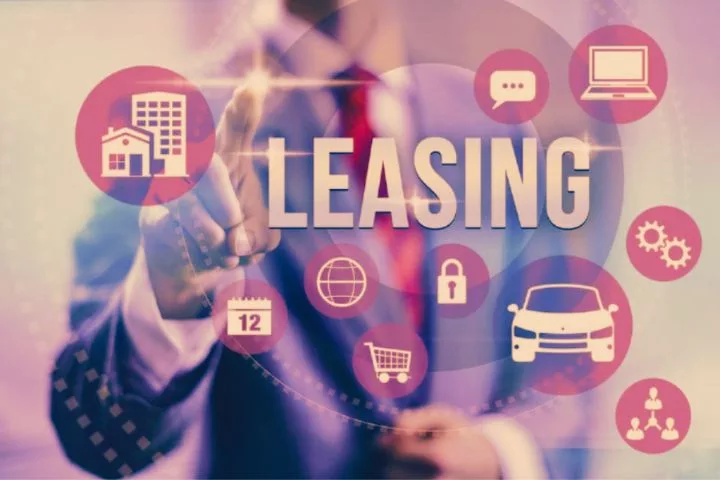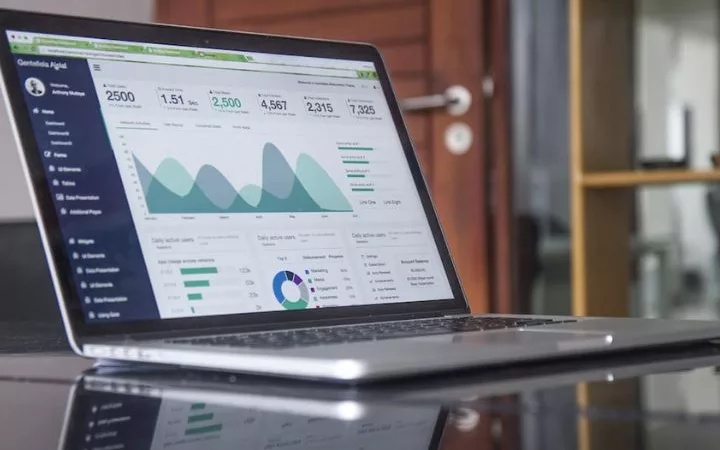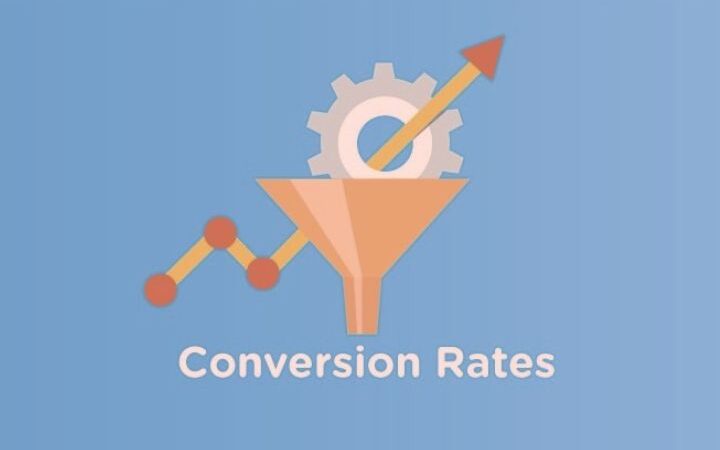Leasing – Definition , Types And Other Important Terms Of Leasing

What exactly does leasing mean?
Here you can find out everything about it.
The changed framework conditions for corporate financing make it necessary for companies to realign themselves in this area. Traditional financing forms are no longer sufficient, and companies are forced to look for alternative financing instruments. One of these alternative financing instruments, which has been gaining importance for several years, is leasing.
In the past few decades, it has become a natural alternative to traditional bank loans, especially for small and medium-sized businesses.
When it comes to leasing, most people think of cars. But that is just one of the countless possibilities. Leasing contracts in real estate, production facilities, office machines, or IT equipment can interest entrepreneurs.
But what is leasing anyway?
Anyone who is not lucky enough to own a house or condominium has already come into contact with a form of financing similar to it: renting. The difference from the classic rental contract is that a leasing contract contains elements beyond the mere transfer of use of the leased object.
Tasks usually the landlord’s responsibility is transferred to the tenant or the lessee. These additional obligations are, for example, maintenance or repair services, repairs, or insurance.
The lessor allows the lessee to use a leased item. The lessee has to pay an agreed fee for this in the form of a monthly leasing rate.
As a rule, the lessor remains this leased asset’s legal and economic owner and includes the item in its balance sheet. At the end of the leasing contract, the item is returned to the lessor or can be purchased by the lessee or a third party.
Other important leasing terms
Deduction for wear and tear (AfA)
Deduction for wear and tear are the tax terms for the depreciation of assets.To determine depreciation times as uniformly as possible, the Federal Minister of Finance publishes depreciation tables in which almost all capital goods that wear out through use or over time are recorded. The tables contain the so-called “usual useful life” for the assets.
Balance sheet neutrality
Since the lessor usually capitalizes on the investment object, the investment is neutral for the lessee’s balance sheet. This means neither an investment nor liabilities are included in the balance sheet.
The equity ratio and debt ratio also remain unchanged. The current installments appear in the profit and loss account. Lease commitments are shown in the notes to the financial statements.
Basic rental period
The non-cancellable essential rental period of leasing contracts is primarily of tax significance. In principle, according to the leasing decrees, it must not be shorter than 40% and no longer than 90% of the useful life of the leased object according to the depreciation table to enable the leased object to be accounted for by the leasing company.
Real estate
Contracts for commercially used buildings such as administration buildings, factories, warehouses, hotels, etc., and land can be concluded. The following variants are the most common:
- Land and buildings are purchased from the leasing company. The latter then concludes a leasing contract with the lessee.
- The leasing company buys the property, builds the building required by the lessee as the “builder,” and concludes the leasing contract.
Such contracts are usually processed via property companies (usually limited liability companies). These are founded for this purpose and represent pure property management companies. The provisions of the real estate leasing decree are decisive for the accounting of the property.
Investment risk
The lessee bears the investment risk during the term of the leasing contract. After the goods have been returned at the ordinary end of the contract or if the contract is terminated prematurely, the investment risk (e.g., the market value risk) is transferred to the lessor.
Lease contract
That can be terminated. Partial mortician contracts concluded for an indefinite period can be terminated after the end of the prior rental period.
Final payment is usually due, but this is not associated with property acquisition. This is already fixed in the leasing contract, staggered according termination dates.
The lessor then sells the object (also to the lessee) and, depending on the amount of the proceeds from the sale, reimburses the lessee for most of it in the form of an offset against the previously determined final payment.
If the proceeds from the sale are much higher than the final payment, a share of the additional proceeds can also be agreed upon with the lessee. So he gets money back on his lease payments made during the term.
This type of contract is primarily used for movables that quickly become obsolete due to rapid technical progress (e.g., EDP systems) and therefore need to be exchanged or expanded.
Special payment
When concluding a leasing contract, a one-off leasing particular payment must be made in addition to the monthly installment payment. The particular payment is usually made at the beginning of the contract and reduces the leasing rates.
It is agreed above all when the leasing object is expected to have an uncertain value development or when other risks are to be “cushioned.”
This is often the case when entering a leasing contract for a vehicle, but it can also be applied to all other movable assets. In practice, the leasing payment is usually 10 to 25 percent of the object’s value to be leased.
The particular leasing payment is a fully deductible operating expense and reduces the company’s profit. In the case of vehicles used privately simultaneously, it should be noted that only the proportion of business use can be claimed for tax purposes.
Employees who lease a vehicle also used professionally can deduct the particular leasing payment as income-related expenses in their tax returns.
Special leasing payments are included in the lessee’s balance sheet as an active, deferred item (advance payment). The dissolution occurs linearly over the term of the leasing contract. The lessor balances them as a mirror image on the liabilities side.
Operational
The purchase option can stipulate that the lessee has the obligation or only the right to purchase the leased object.
Depending on the binding purchase option specified in the leasing contract, the leasing object is assigned to either the lessor or the lessee.
If the purchase option is open, it is an operating lease, whereby both parties, like a rental contract, can terminate the leasing contract.
As the owner of the leased object, the lessor bears all costs for the leased object (insurance, maintenance, repairs). The lease fee for the lessee is a 100% tax-deductible business expense.
Pay-as-you-earn
Pay-as-you-earn means that the leasing installments are incurred in parallel with the use of the object, and the leasing object is more or less self-financing (effect/cost congruence).
The financing costs are distributed over the useful life and thus also over the period in which income is generated from the property. Pre-financing is thus avoided.
Progressive payment
Progressive payment means leasing rates increase from low to higher final rates. The liquidity of the lessee is, therefore, less burdened at the beginning of the contract.
Residual value
Residual value is the calculated or actual value of the object after the contract has expired or if the contract is terminated prematurely. In the case of partial amortization leasing contracts, the residual value is used to calculate the amount of the leasing installments.
The higher the residual value, the lower the rates. The lessee is liable to the leasing company for the residual value.
A distinction is usually made between:
- Accounting residual value/residual book value: the accounted value of an asset depends on the valuation date.
- Calculated residual value: refers to the remaining amount still open after the introductory rental period has expired. It is determined at the contract’s start, considering the agreed use and future market price developments.
- Residual value/market value: the actual value of an asset that can be achieved in the prevailing market situation
Seasonal Payment Type
With the seasonal payment method, the installments alternate between higher and lower installments in pre-determined months. The lessee pays when he earns money with the object (pay-as-you-earn concept).
Special
With this leasing, the object is tailored so precisely to the lessee’s needs that a third party has no meaningful commercial use for the object. The sale or rental to third parties is therefore not possible.
Therefore, in this case, the leased item is accounted for by the lessee since he alone is the beneficial owner. With special leasing, the leased item is not a fungible asset.
Partial amortization contract
In the case of a partial amortization contract, the leased asset is not fully amortized during the introductory rental period. After the end of the contract, a residual value remains open, which the lessor often has the lessee secure with a right to tender.
The return of the leased asset to the lessor at the end of the prior rental period is only possible if the lessor can sell the object at least for the residual value.
The advantage of this contract model is that the leasing installments are lower than with complete amortization contracts. A disadvantage can be that investment costs are postponed to an uncertain future in the residual value amount.
Sales
If manufacturers or dealers combine their product offers with leasing offers, this form is called sales leasing. Here, the product sellers are authorized by the leasing company to negotiate the terms of the leasing contracts.
Pre-rent
A provisional rent (= rent) is agreed upon when a real estate leasing contract is concluded. The final rent will only be determined once the total bill has been submitted.
In the case of larger construction projects, the lessee must make so-called “pre-rents” (no advance rent payments!) until the leased object is ready for occupancy (during the planning and construction phase).
These pre-rentals include:
- Interest in the interim financing
- Commitment commission for long-term borrowed funds
- administrative expenses
- Costs associated with the creation of the building project






